The $19BN Plan to Save New York's JFK Airport
- Youtube Views 693,357 VIDEO VIEWS
Video hosted by Fred Mills. This video and article contain paid promotion for Parsons Corporation.
ORIGINALLY called Idlewild Airport, John F. Kennedy Airport (JFK) was built to relieve congestion at LaGuardia in 1948. It opened with six runways and five distinct architecturally stunning terminals.
By the next decade, the airport was handling the largest amount of international air traffic in the world and was the first place to serve passenger jets.
But JFK’s world renowned status soon took a nosedive. With increased demand and a terminal layout designed from a pre-jet age, it simply couldn't keep up.
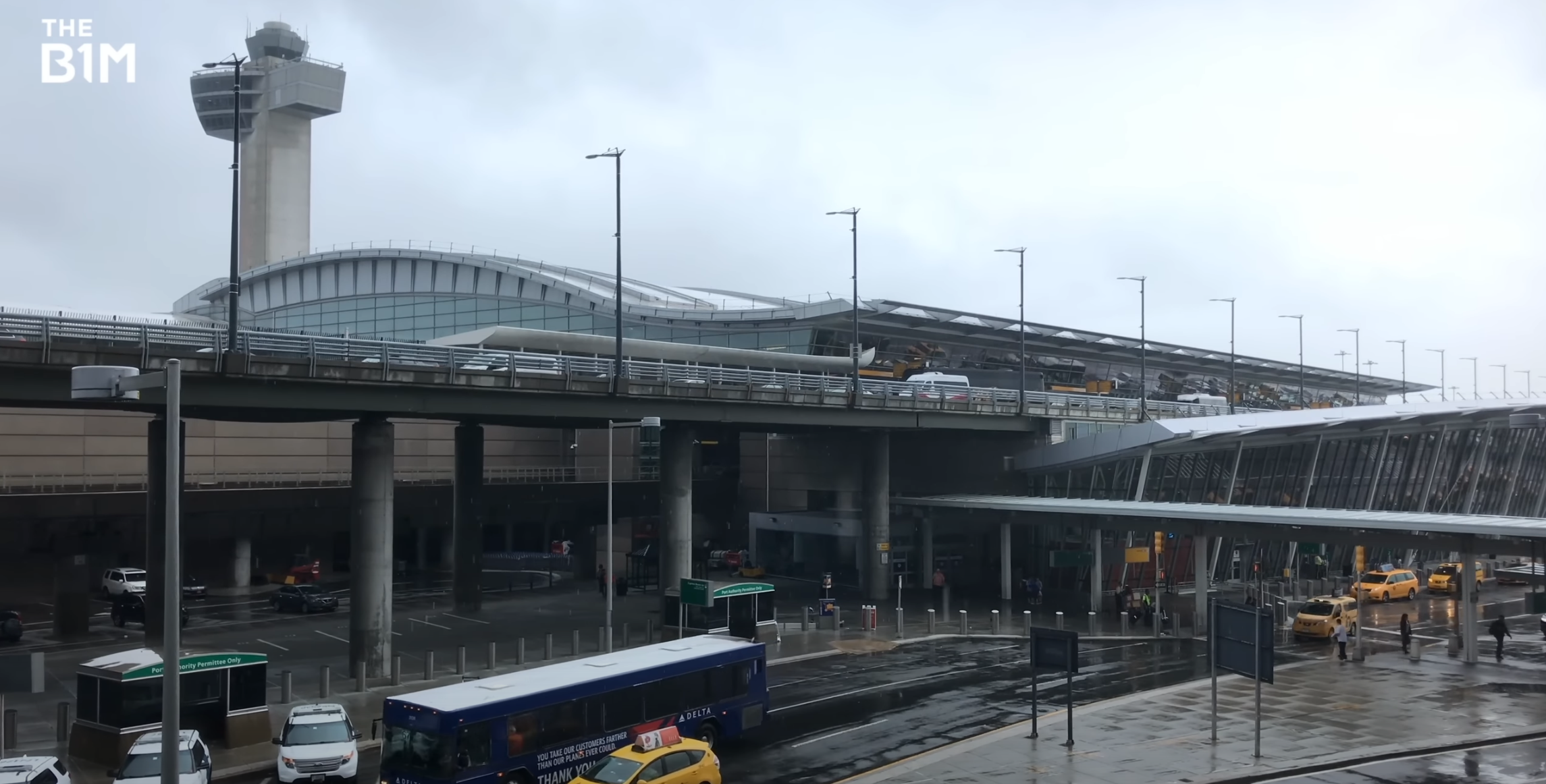
Above: JFK Airport as it stands now.
Today, with over 55M annual passengers, it is still one of the busiest in the country. And yet it consistently ranks as one of the worst hubs to travel through by measures such as significant delays, its disjointed layout, and accessibility from the city.
Typically terminals are controlled by the airport’s owner or operator and are all connected in a centre area. But JFK is different. Instead, it has six somewhat disconnected terminals - five of which are currently active - that are managed by the airlines themselves. This can make it difficult for passengers to make transfers on layovers. And airlines can never divert to a different terminal because each one only accepts planes from its owner.
Because the terminals have been rebuilt or demolished over the years - they’re still numbered between one through eight… just with a couple numbers missing in between. As if it’s already not confusing enough to travel through.
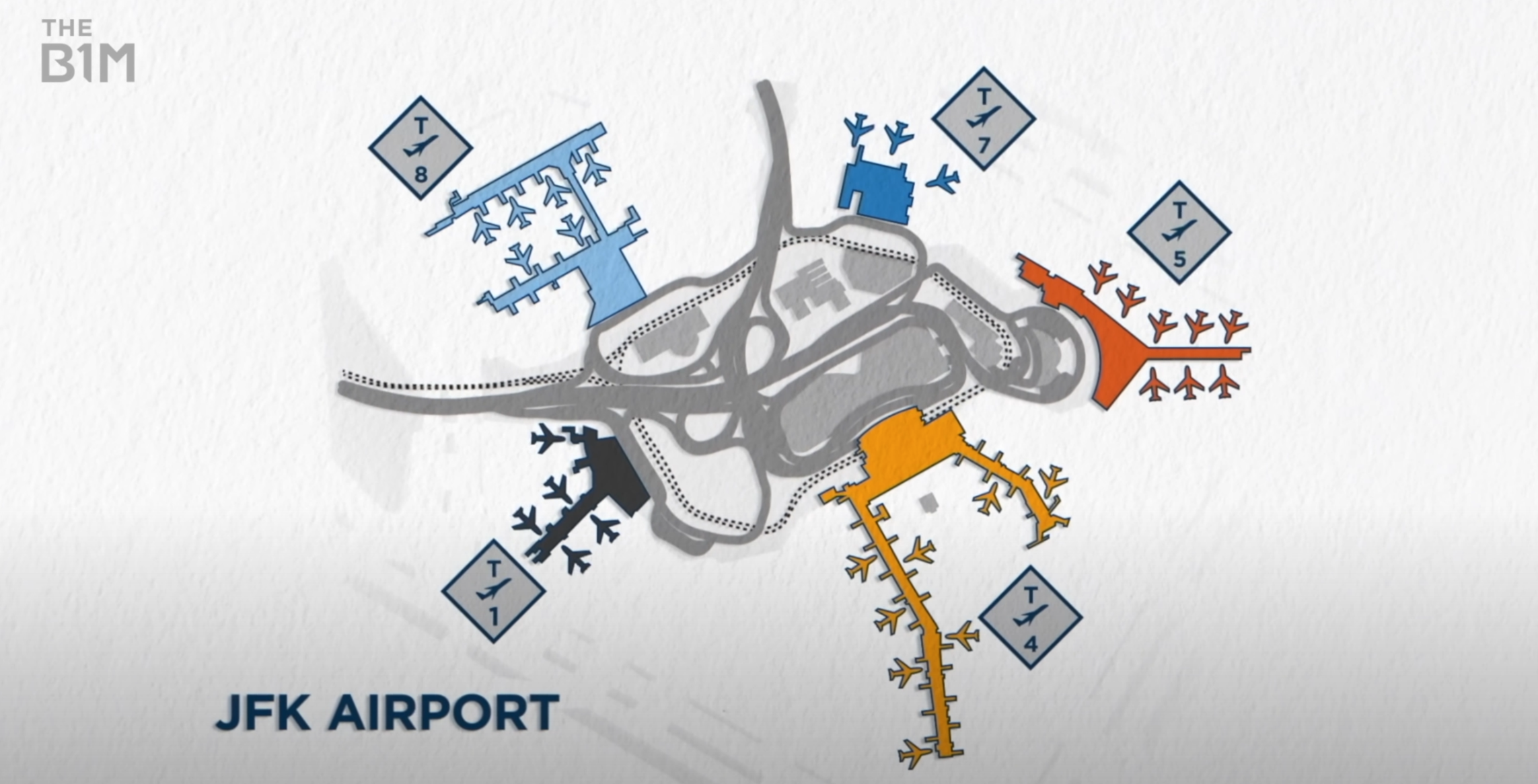
Above: The current layout of JFK Airport.
So it’s perhaps not surprising that what was once regarded as the top airport amongst pilots and passengers alike, now fills travellers with dread.
With a projected 100M annual passengers by the year 2050 - well beyond its initial capacity - city officials finally decided to act.
The vast upgrade plan consists of revamping the terminals and improving the roadway and transit system between them.
At the heart of the project is the New Terminal One. With 23 gates and 2.5M square feet, it will be nearly the size of LaGuardia’s two new terminals combined making it JFK’s largest terminal.
The $9.5BN project will include a new departures, arrivals, and customs hall along with public spaces, amenities, and state of the art technology.
Large open areas will be filled with natural light - something that will surely be welcomed by passengers who are accustomed to the current dark and dreary terminals.
Set to finish in 2030, New Terminal One will be completed in phases with the new halls and portion of the gates set to be done by 2026.
While that may be the biggest new terminal, it’s not the only one.
Terminal Six will stretch 1.2 million square feet across a two-level concourse. There will be a giant new check-in space with a centralised security area which means travellers won’t have to drag their luggage too far.
This will enter into the East Hall with additional dining and retailing facilities which will ultimately connect to Terminal 5 - making connections between the two easier.
Construction here is expected to finish around 2028.
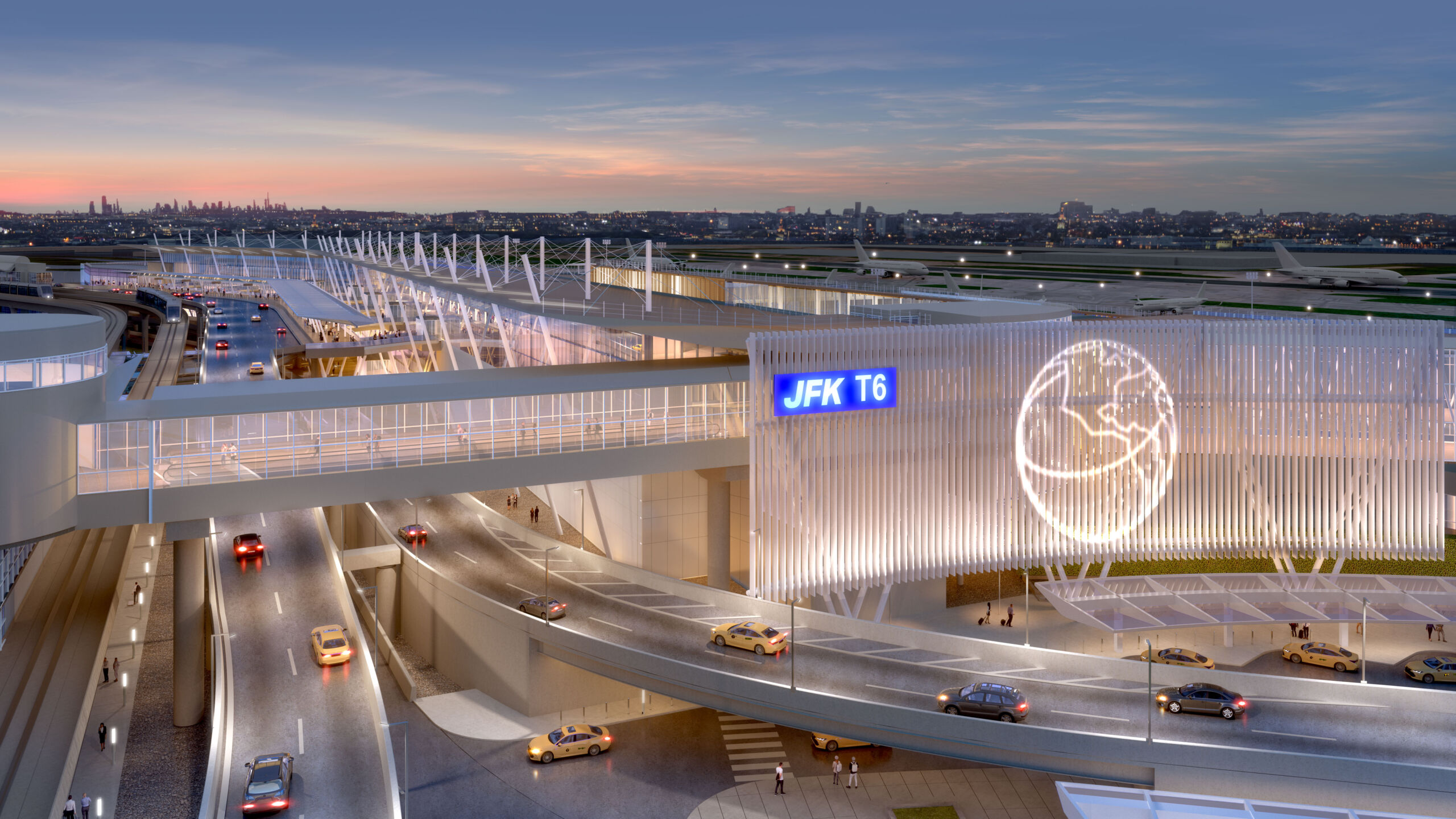
Above: The new Terminal Six at JFK. Image courtesy of A New JFK.
In addition to big brand new terminals, the two remaining terminals are getting new shops, restaurants and upgrades throughout.
But the outdated terminals are obviously just part of the reason JFK lags behind. To address the connection issues between these facilities, JFK airport is reconfiguring its roadway transportation network.
With new roads, bridges, and enhanced traffic technologies, travellers will have an easier time navigating between terminals.
They are also reducing the number of roadway loops from five to two main loops - making it less confusing for drivers.
All of these will create space for more cars to circle through but less congestion to stack up.
Also included is a multi-level parking facility with nearly 2,000 spaces and an eco-friendly timber exterior. A 122 metre pedestrian bridge equipped with rainwater harvesting technology will link it to the New Terminal One.
But of course all this construction isn’t without disruption.
The Airtrain is temporarily shut down at terminal one which means passengers will instead have to take a shuttle bus to another terminal.
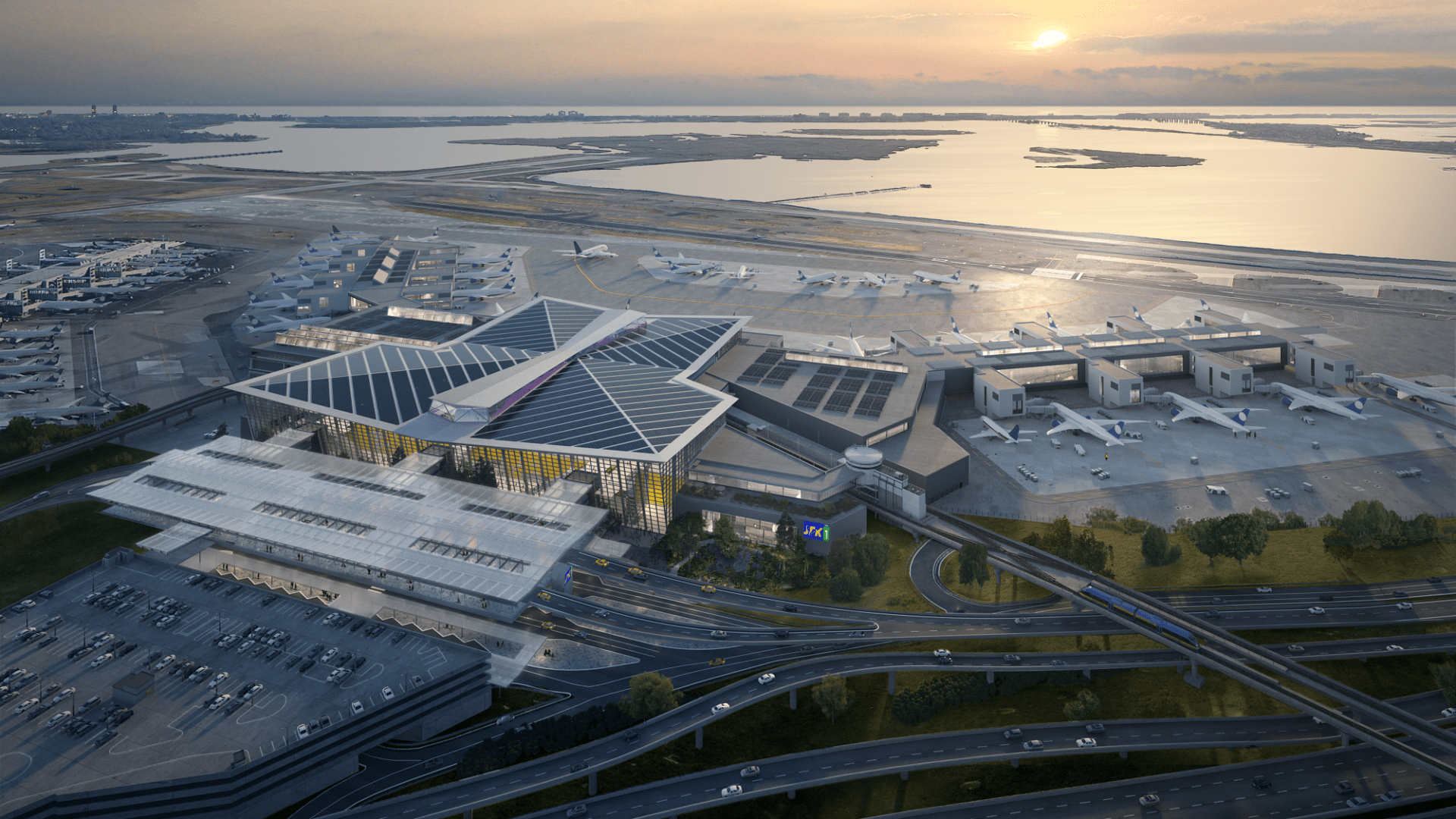
Above: The new Terminal One at JFK. Image courtesy of A New JFK.
Perhaps one of the biggest construction challenges is the location of JFK airport itself. Because it is surrounded by dense neighbourhoods and congested highways, delivering and hauling away materials is no easy feat.
So instead of relying on trucks going against heavy traffic - workers are turning to another artery: the waterways.
Barges carrying rocks and sand will navigate back and forth as far away as the New York Catskills, 40 kilometres north as they’re being pulled by tug boats. They’ll float down the Hudson River and across the bay into a makeshift dock using temporary floating platforms on the western side of the airport.
City officials say this alternative could eliminate as many as 300,000 roundway trips on trucks throughout the course of the project.
Just one barge equates to 200 truck loads alone!
Less vehicles on roadways means less traffic and pollution created by the project.
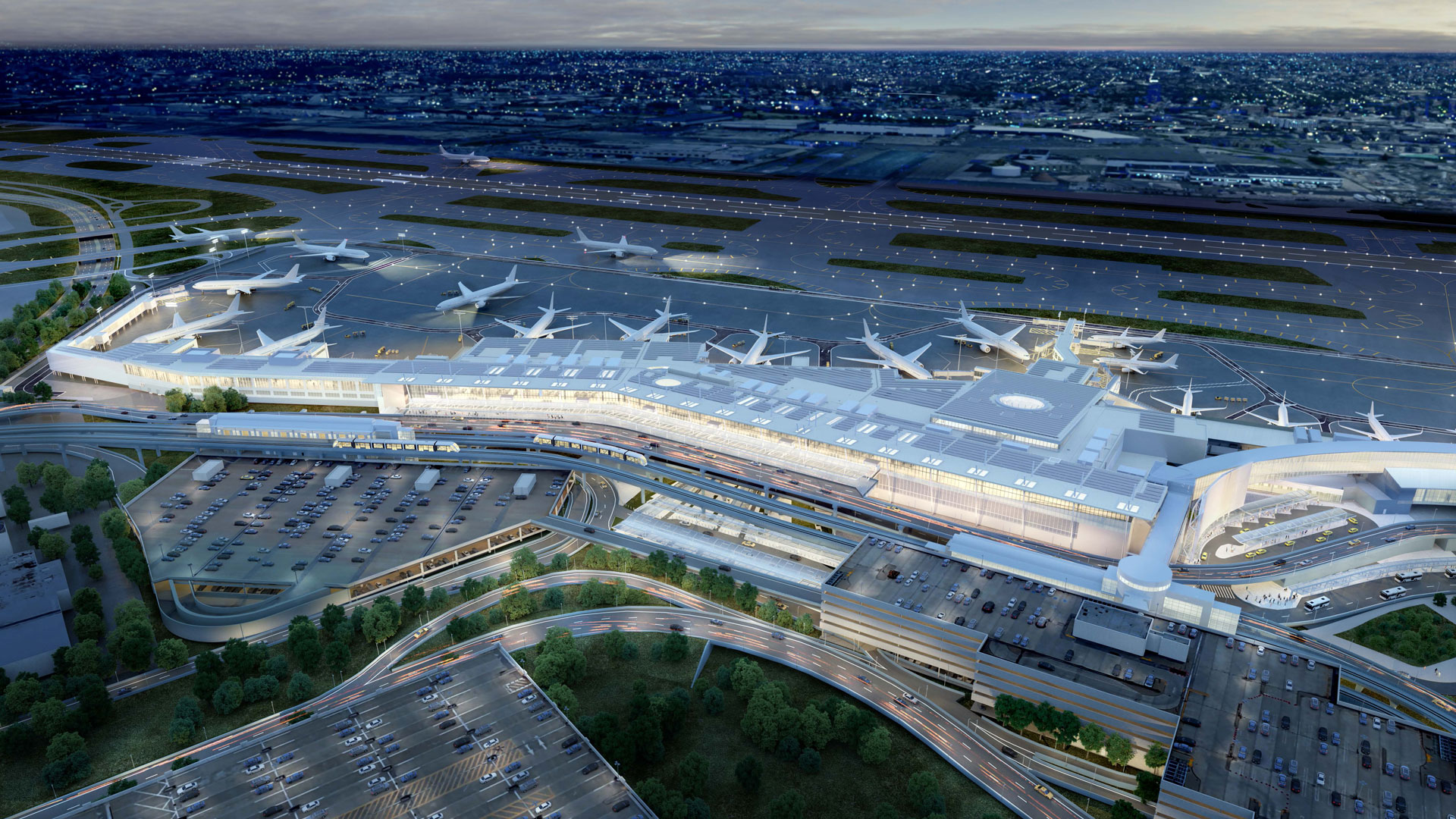
Above: Rendering of the completed new terminals. Image courtesy of A New JFK.
But this alternative can be a bit unpredictable. According to a report by the New York Times - a storm delayed one tugboat from reaching the dock because it was churning up massive swells around the surrounding bay.
The city is also building its own concrete plant to produce the roughly 550,000 square metres expected to be used at JFK. That’s enough to fill about 218 Olympic swimming pools!
Now, producing this much concrete isn’t great for the environment. However, officials hope that locating production on site will allow for easier reuse of materials - which can ultimately reduce its carbon footprint.
JFK was once a renowned airport amongst travellers and pilots. But as it’s gotten busier, it hasn’t been able to keep up with increased demand.
It’s one of the many New York City airports undergoing a massive overhaul in order to maintain pace with the city’s world class status.
While projects like these may be regarded as first-class when they first open, if they don’t continue to update - they’ll get left behind. So it’s important to upgrade or else they risk an unfavourable outcome.
Thankfully, New York has recognised this scenario and it hopes to fix it before it's too late.
This video and article contains paid promotion for Parsons Corporation.
Additional footage and images courtesy of CBS New York, CBSN, Fox News, A New JFK, Port Authority of New York and New Jersey and Google Earth.
We welcome you sharing our content to inspire others, but please be nice and play by our rules.








